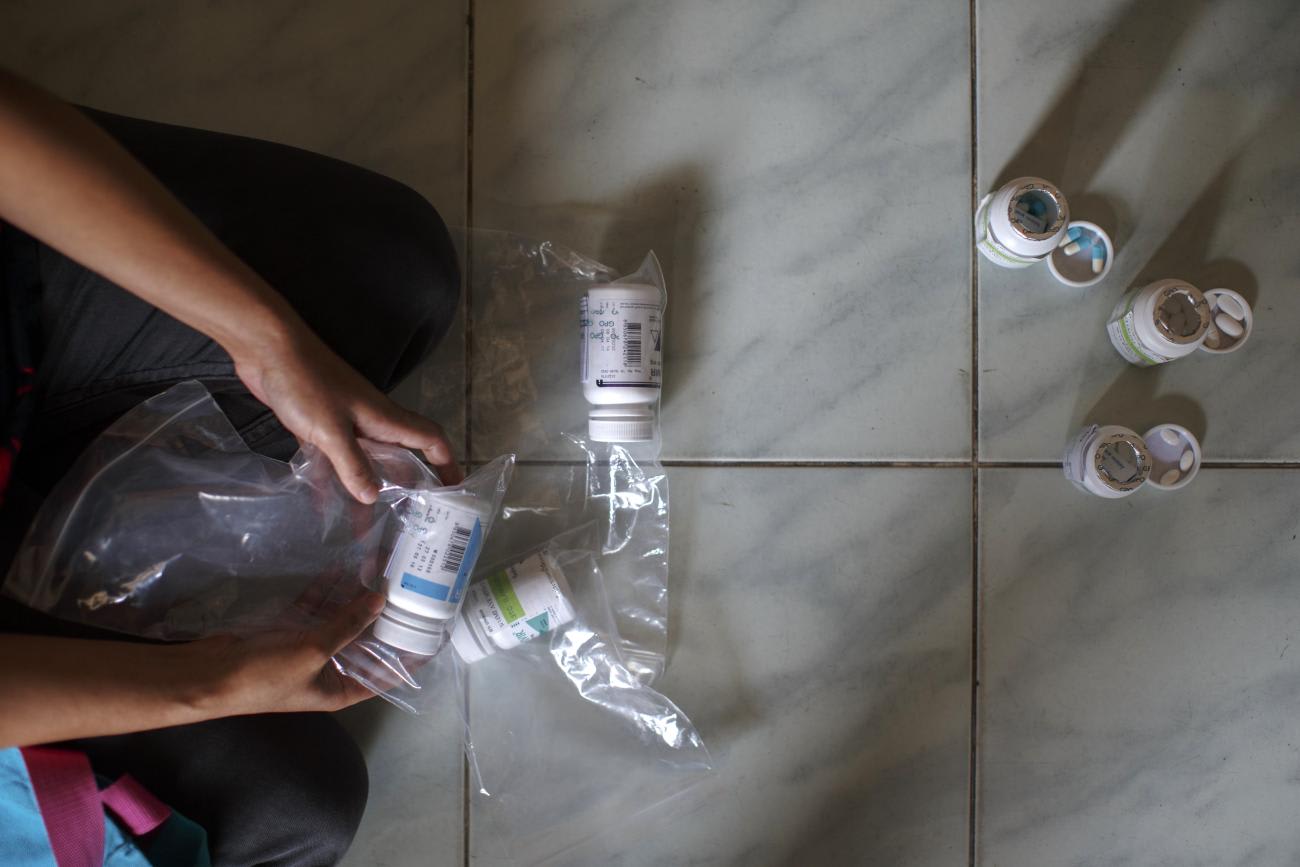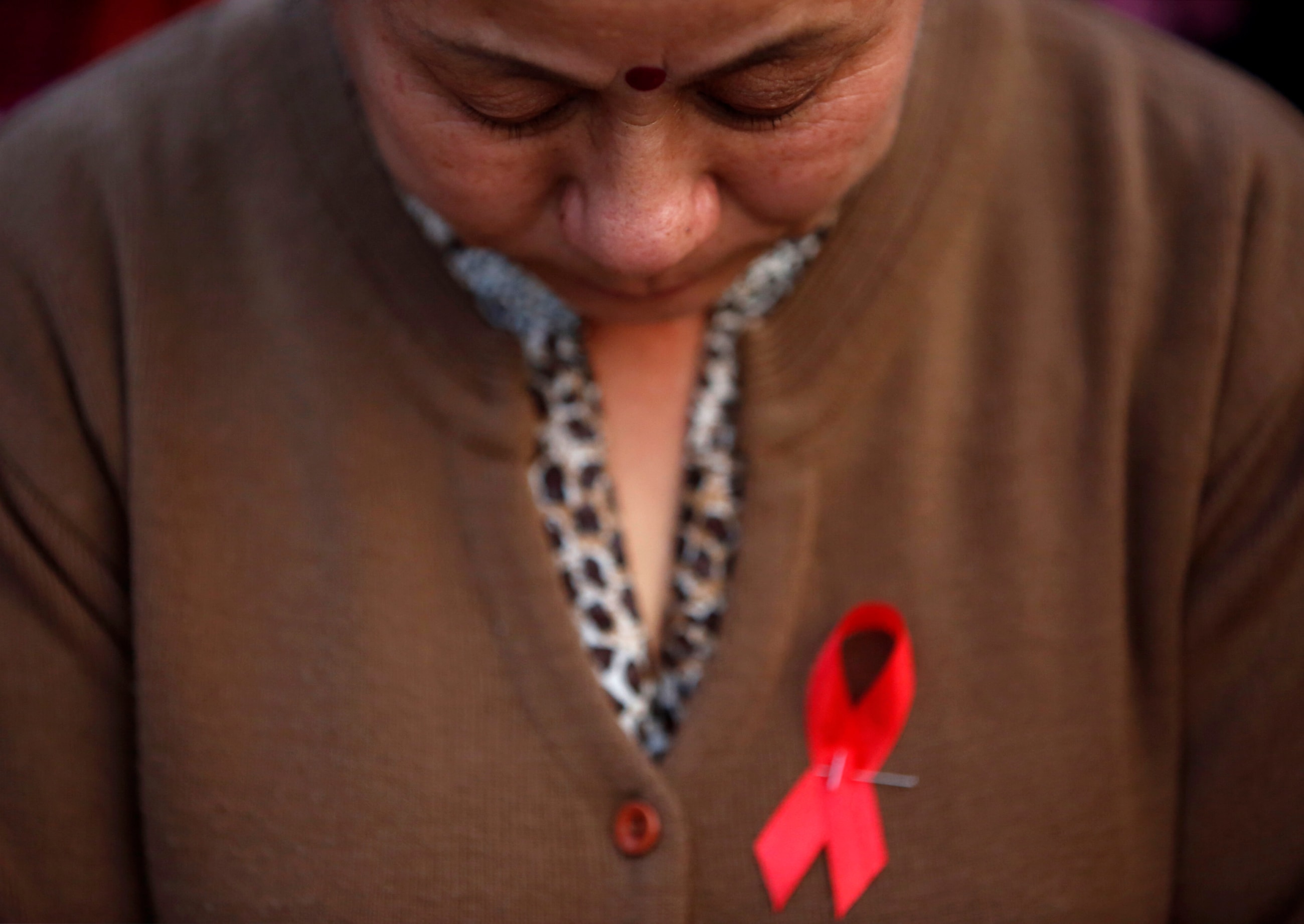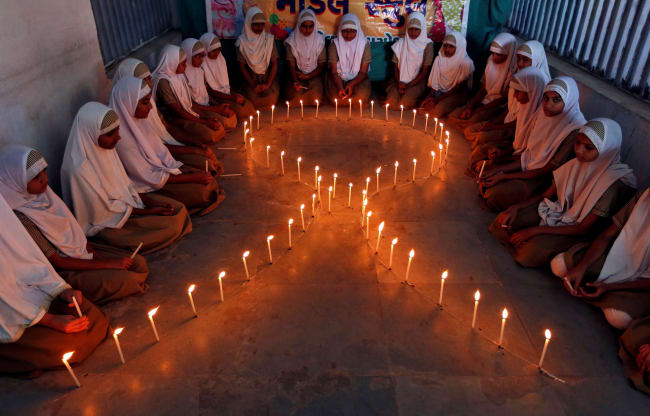When President Joe Biden delivered the State of the Union address in March 2024, he made passing reference to a HIV/AIDS program that sat in limbo despite having saved millions of global lives.
The President's Emergency Plan for AIDS Relief (PEPFAR) was entering its sixth month without a congressional reauthorization—an unprecedented impasse for the program founded during the George W. Bush administration to provide HIV treatment and prevention to the low-income countries with the highest rates of disease in the world. Biden said of PEPFAR, "It's been a huge success. [Bush] thought big. He thought large. He moved! I believe we can do the same thing with cancer."
For some advocates, the mention was a welcome sign of presidential support for the beleaguered program, whose reauthorization was derailed by spurious accusations that PEPFAR dollars paid for abortions overseas. The allegations, which began with a June 2023 report by the Heritage Foundation, persisted long after it became clear that no evidence supported the claims.
The president's fleeting PEPFAR mention hewed close to a familiar script. Throughout the Biden administration's first term, the White House, State Department, and the U.S. Agency for International Development (USAID) have praised PEPFAR's achievements but not its design, strategy, or structure. When U.S. government leaders laud PEPFAR's contributions to other outbreak and pandemic responses, including mpox, Ebola, and COVID-19, they seldom dwell on the program's exceptional ability to serve as a springboard for urgent responses. Instead, the ends are cleaved from the methods even though the two are inextricably linked.
A strong case can be made that this omission is not accidental or incidental. Ambivalence and even animosity toward PEPFAR's defining features have shadowed the program since its inception 21 years ago. Often, these concerns come from Democrats who favor foreign aid and soft power deployed through USAID, but the divide is bipartisan. For as long as the program has existed, some Republicans have fretted about what PEPFAR pays for, and some Democrats have fumed about how it operates.
The state of this HIV/AIDS effort will undoubtedly be front and center at the twenty-fifth International AIDS Conference kicking off on July 22. An accurate forecast of the program's future needs to include a full reckoning of both Republican and Democratic concerns.
As described in this series' first article, a small group of Republicans took actions and made accusations that helped botch the latest reauthorization process, which ultimately resulted in a one-year extension. By the time the abortion accusations surfaced in June 2023, the Biden administration had clearly staked out a position of praising PEPFAR's accomplishments on HIV without substantially leveraging its potential for fighting other pandemics.
This second installment explains why this situation was no accident and how long-standing critiques of the program's structure and modus operandi have made PEPFAR so vulnerable.
Design, Deployment, Measuring Impact
PEPFAR was designed to function differently from almost all other health-focused foreign aid efforts in American history. Gary Edson and Jay Lefkowitz, senior advisors to President George W. Bush, mapped out the structure in the White House mess in mid-2002. By then, Anthony Fauci, director of the National Institute of Allergy and Infectious Diseases, was deep into the design of a program that would deliver antiretrovirals to millions of people living with HIV in sub-Saharan Africa.
Bush's aides proposed, and President Bush ultimately signed off on, a State Department-housed initiative under the leadership of an ambassador-at-large with a direct line to the Oval Office and the title of U.S. global AIDS coordinator.
PEPFAR was designed to function differently from almost all other health-focused foreign aid efforts in American history
This ambassador sat at the same level as the USAID administrator and the head of the Millennium Challenge Corporation, Bush's other and far-less successful foray into large-scale foreign aid reform. The U.S. global AIDS coordinator controlled the budget, planning and reporting process for teams led by U.S. ambassadors and including all U.S. government agencies working in each country.
Before PEPFAR, the State Department and its embassies around the world had little to no funding for programs in their budgets and were obliged to seek resources from other agencies working at the country level, such as USAID, the Department of Defense, or the Peace Corps. PEPFAR paired money and mandate to support global health diplomacy for the first time. The U.S. global AIDS coordinator was empowered to develop reporting and data collection systems that would meet his or her needs and allow the program to deliver highly detailed reports on its results to Congress.
Each program head used these flexibilities creatively. Randall Tobias, the first PEPFAR head, oversaw the development of the State Department's first system for collecting data on program performance. Activists used the flexibilities to their advantage from the program's earliest days. In the first 24 months of the program, activists deployed protests, research, and analysis arguing that PEPFAR should rapidly move from its initial practice of purchasing brand-name drugs rather than less costly generics. Tobias, a former pharmaceutical executive, was empowered to shape the program's procurement approaches and acceded to this pressure. The shift to generic procurement fundamentally transformed the program.
Tobias and his successor Mark Dybul built and refined an unprecedented system for reporting on the program's results. USAID reported primarily on allocations and disbursements rather than impacts. Starting in 2009, with Ambassador Eric Goosby at the helm, the program launched a massive analysis of how much different program partners spent to deliver the same service, then used that information to figure out how to do more with the same funds going forward. Then in 2014, Ambassador Deborah Birx built out an intricate planning and evaluation process and launched public-facing dashboards with information on targets and performance in every PEPFAR country.
The program's current leader, Ambassador John Nkengasong, has embarked on an ambitious project of stoking enthusiasm for and ownership of the HIV fight with African governments and private-sector partners facing multiple concurrent crises and competing demands.
Copy and Paste?
Few other U.S. global health initiatives, whether supported by USAID, the Centers for Disease Control and Prevention, or the Defense Department have adapted any of these interventions—even though all these agencies were required to do so for their PEPFAR programming, and some have been explicitly requested to beef up their reporting.
A 2023 assessment by the Government Accountability Office (GAO), "Management Improvements Needed to Better Meet Global Health Mission," notes that the USAID Global Health Bureau's performance sometimes lacked "key information that is either required to be included or that we have identified as important for performance assessment, hampering Congress's oversight of the breadth of global health programming." USAID began implementing global health security programs through the Global Health Bureau in fiscal year 2015; it began tracking country level spending only three years later, after another GAO report on its Zika response recommended that it do so.

PEPFAR's approach to data use and reporting cannot simply be copied and pasted to other programs. Advancements in global health security depend on actions across multiple government sectors in every country, and no external partner, including the United States, can drive change and demand results. Antiretroviral access expanded rapidly in the early years through vertical, nongovernmental organization-led programs that often operated outside national health systems. The link between antiretroviral treatment for a person living with HIV and improved health is also straightforward and simple to convey. In contrast, progress and impact in pandemic preparedness and response or primary health care means that is harder to measure and often involves things that don't happen, such as outbreaks, obesity, or heart disease.
But the approach isn't just unique, according to several people we spoke with, it's also deeply unpopular. One public health expert and former PEPFAR staffer lamented that "the absolute misinformation campaign within the administration and facilitated by USAID and others that results and accountability frameworks were somehow too colonial and unreasonable."
No U.S. agency has ever stated, for the record, that PEPFAR's approach to data, results, and costs was a problem. But by the time the most recent abortion debate about PEPFAR began in June 2023, a largely Democratic cadre of development practitioners had spent nearly 15 years arguing that PEPFAR was housed in the wrong U.S. government agency and that the HIV focus was so vertical and costly that it verged on unethical.
At multiple points during the Barack Obama administration, USAID sought to move PEPFAR under its roof. USAID Administrator Raj Shah sent a proposal to combine all of global health under a single agency to the White House. Secretary of State Hillary Clinton's massive and largely forgotten Quadrennial Diplomacy and Development review proposed reviewing PEPFAR's place in the public health universe, prompting then PEPFAR head Eric Goosby to write the secretary imploring her to clarify that PEPFAR would remain at the State Department.
Goosby later told me about three separate takeover attempts, noting that the political jockeying around PEPFAR's home precluded the program from "being the transitional, catalytic program for expansion in all countries that it should be."
PEPFAR and Biden
The Biden administration's embrace of PEPFAR solely as an HIV program and an example of American compassion has dismayed some public health and foreign policy experts. In October 2023, a multistakeholder working group convened by the Center for Strategic and International Studies released a report imploring the president to "communicate clearly regarding how PEPFAR both stands at the center of a unified and aligned U.S. approach to global health security and pandemic preparedness and reinforces U.S. national security through supporting countries' responses to the HIV pandemic as well as new and emerging pandemics."
Had Biden delivered such clear messages as he unfurled his COVID-19 and pandemic preparedness strategies, PEPFAR might have been in a stronger position when the right-wing attacks began. Its capacities in data collection, results reporting, and costing analysis could have been elevated as invaluable assets in America's attempts to be responsible with taxpayer dollars spent on reducing the risk of pandemics at home and abroad. But none of the people interviewed for this article were aware of any efforts to assess which elements of PEPFAR might be adapted or reappropriated for relevant programs.
PEPFAR's biggest fans and its most persistent detractors have both, for their own reasons, contributed to an oversimplified view of the program
PEPFAR could have been made vulnerable by stakeholders averse to its modus operandi. It could also have been jeopardized by some of the groups that love it the most, including civil society advocates and the dedicated team at the program's offices on G Street and, indeed, Joe Biden, whose congressional track record on HIV/AIDS and PEPFAR was exemplary.
Biden is one of many congressional champions no longer working on Capitol Hill. The league of Hill supporters who were present at PEPFAR's creation has dwindled to just 13% of current members of Congress, according to Katie Coester, associate director of public policy and advocacy at the Elizabeth Glaser Pediatric AIDS Foundation and co-chair of the Global AIDS Policy Partnership.
A politically appointed U.S. global AIDS coordinator spent less time on the Hill in the years leading up to the most recent reauthorization than in any prior Congress. In 2008, 2013 and 2018, the reauthorization was managed by an individual who had been in the post for years prior, cultivating relationships and delivering briefings to members of Congress on a regular basis. This reauthorization process followed a 30-month interregnum from March 2020 when Ambassador Birx took a leave from her post to become the White House Coronavirus Task Force to the June 2022 appointment of Ambassador Nkengasong.
Nkengasong started behind the clock and in the shadow of a GAO report that criticized the program's data use and the take-no-prisoners demeanor of its former head. Within months of his confirmation, PEPFAR was part of a sweeping proposal to reorganize the State Department's global health functions. This proposal resulted in the State Department's new bureau of Global Health Security and Diplomacy with Nkengasong at the helm of both PEPFAR and a global health security team.
Some PEPFAR supporters, including Congresswoman Barbara Lee, were concerned that the program's position in the new bureau would divert from its primary focus on ending HIV as a public health threat by 2030. Advocates offered messages that focused on PEPFAR's HIV role to address fears about mission creep, reinforcing the notion that the program is defined by the virus it fights, and not its structure and tactics.
PEPFAR's biggest fans and its most persistent detractors have both, for their own reasons, contributed to an oversimplified view of the program. A program whose most essential components have been critiqued or glossed over in favor of feel-good footage of healthy children was less likely to muster the support it needed to survive. In fact, it almost didn't.
Six months from now, the program will be up for reauthorization again. At some point in the future—perhaps before then—another outbreak of pandemic-potential could prompt the United States to reexamine its approach to global health. In the final article in this series, we'll consider whether PEPFAR is likely to fare better in 2024, and whether the U.S. government will attempt anything like it ever again.

EDITOR'S NOTE: This story is the second in a three-part series about how the President's Emergency Plan for AIDS Relief (PEPFAR) came under threat. All three stories are available at this series page.












